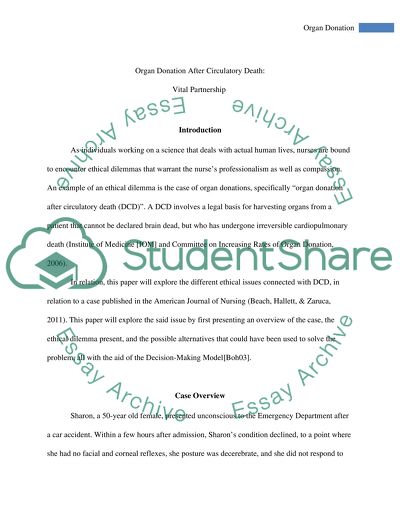Cite this document
(“Organ Donation After Circulatory Death: Vital Partnership Essay”, n.d.)
Retrieved from https://studentshare.org/nursing/1429361-organ-donation-after-circulatory-death-vital
Retrieved from https://studentshare.org/nursing/1429361-organ-donation-after-circulatory-death-vital
(Organ Donation After Circulatory Death: Vital Partnership Essay)
https://studentshare.org/nursing/1429361-organ-donation-after-circulatory-death-vital.
https://studentshare.org/nursing/1429361-organ-donation-after-circulatory-death-vital.
“Organ Donation After Circulatory Death: Vital Partnership Essay”, n.d. https://studentshare.org/nursing/1429361-organ-donation-after-circulatory-death-vital.


